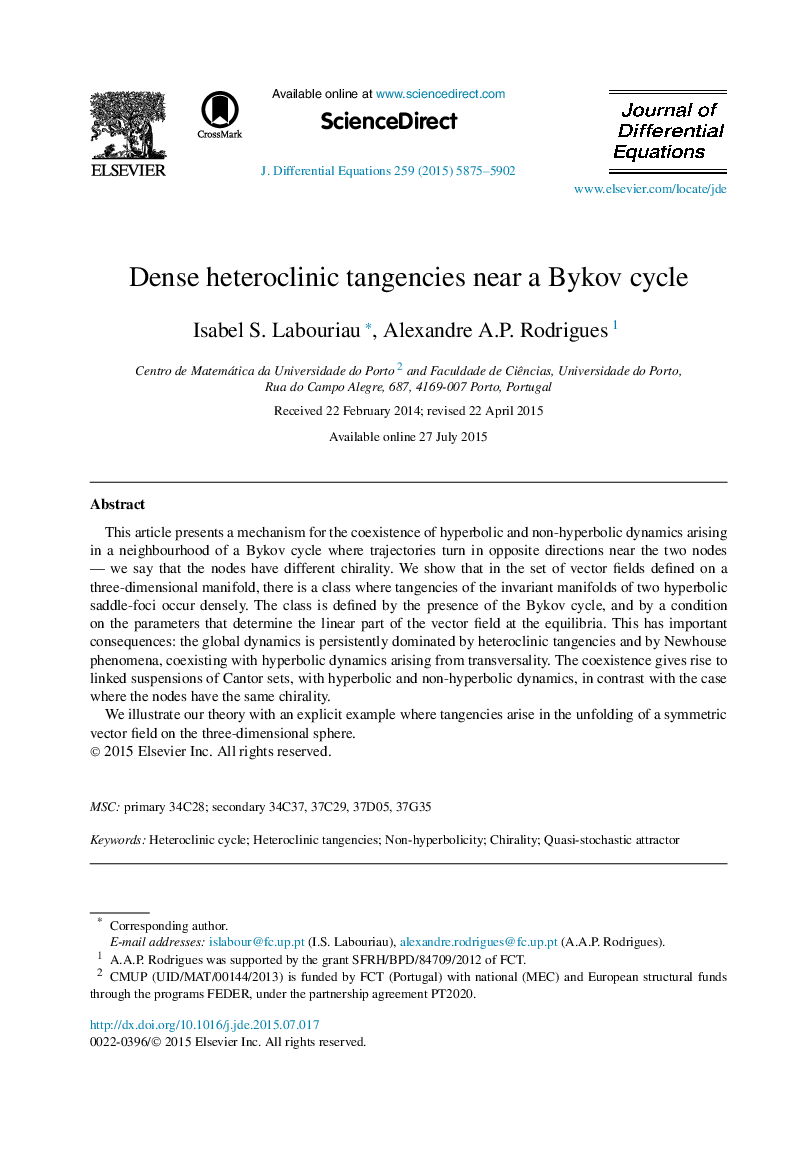| Article ID | Journal | Published Year | Pages | File Type |
|---|---|---|---|---|
| 6417095 | Journal of Differential Equations | 2015 | 28 Pages |
â¢We show the coexistence of hyperbolic and non-hyperbolic dynamics in an O.D.E. in the 3-sphere, near a heteroclinic cycle.â¢Chirality (relative direction of rotation) is essential for the coexistence.â¢Non-hyperbolicity arises from tangencies of 2-dimensional invariant manifolds; hyperbolicity appears as suspended horseshoes.â¢Tangencies occur in a subset of parameters that is dense in a set of full Lebesgue measure.â¢We give an explicit example of a polynomial vector field with these properties, illustrated by numerical simulations.
This article presents a mechanism for the coexistence of hyperbolic and non-hyperbolic dynamics arising in a neighbourhood of a Bykov cycle where trajectories turn in opposite directions near the two nodes - we say that the nodes have different chirality. We show that in the set of vector fields defined on a three-dimensional manifold, there is a class where tangencies of the invariant manifolds of two hyperbolic saddle-foci occur densely. The class is defined by the presence of the Bykov cycle, and by a condition on the parameters that determine the linear part of the vector field at the equilibria. This has important consequences: the global dynamics is persistently dominated by heteroclinic tangencies and by Newhouse phenomena, coexisting with hyperbolic dynamics arising from transversality. The coexistence gives rise to linked suspensions of Cantor sets, with hyperbolic and non-hyperbolic dynamics, in contrast with the case where the nodes have the same chirality.We illustrate our theory with an explicit example where tangencies arise in the unfolding of a symmetric vector field on the three-dimensional sphere.
